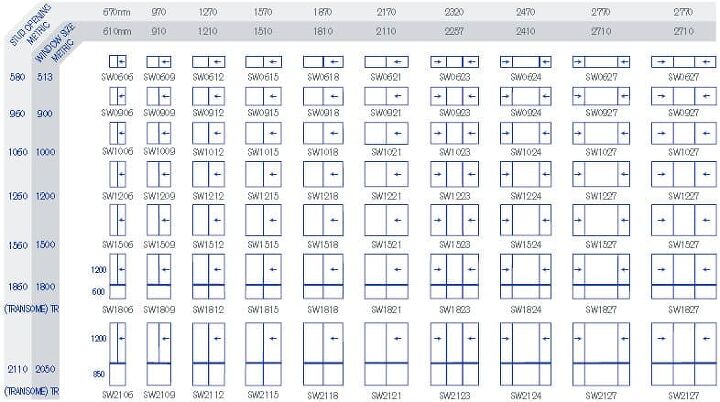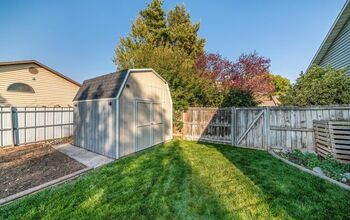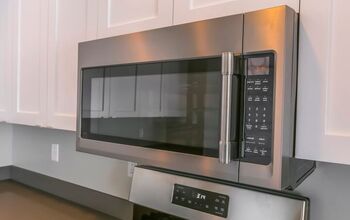What Are Standard Window Sizes? (Size Ranges by Type)

When you look at different houses, different types have various sizes of windows. While most people will consider these a ‘standard window’ and not give it much thought after, that begs the question; What is the standard window size? This information will come in handy when you are changing windows or building a home that you need to choose windows for.
For living rooms and kitchens, the average window size is anywhere from 24 to 96 inches in width, to 12 to 96 inches in height. For bedrooms, the average window size is 24×36 inches. However, there is no universal window size. The size of the window will depend on the type of the window installed. For example, Bay windows measure at least 3 ft and 6 inches to 10 ft and 6 inches wide, and 3 feet to 6 feet and 6 inches tall.
There is a lot more that goes into choosing a window than one may think, which can make the process of replacing or installing a new window somewhat overwhelming. Below, we will take a look at the standard sizes of each type of window to help this process go a bit more smoothly for you.
Do You Need a Window and Door Contractor?
Get free, zero-commitment quotes from pro contractors near you.

Why You Need to Consider the Standard Window Size
If you are looking to replace your windows, or install new ones, then you have probably seen that there are several different standard dimensions. While not every window will fit into the opening you need to fill; you can usually find a window that works for most homes and compliments your space.
Of course, there is always the choice of custom windows, but that usually comes with a hefty cost which is why it is best to stick to standard window sizes when you are able. Regardless of what type of window you choose, there will be an installation cost associated with it. That price will depend on the size and type of window that you prefer. So, your standard size of the window will depend on how big of a window you need… does that make sense? We will explain more below.
Standard Window Size by Type
There are a variety of standard window sizes depending on the type of window. However, the way they fit into each kind of home, office apartment, or garage differs. For example, a double-hung window may be great for a bathroom in an apartment, but it would not be ideal in a garage.
What Size Window Do I Need?
When you need to replace or install a window, the manufacturer typically has a size notion to help you figure out the window size you need for the opening. The size notion is the height and the width combined. The first two numbers are the measurement for the width, while the second two numbers are the height.
So, let us take a look at a 2426 window; this particular one’s width would measure 2’4” with a height of 2’6”. However, it is essential to keep in mind that the actual measurements are about ½ of an inch less than what the measurements say on the label.
Actual Measurements Of A Window
An example of the actual measurements would be, let us say, that a window is labeled for a 44” by 44” hole. Now, the precise measurement of that window will be 43 ½ by 43 ½ because the manufacturer accounts for the space needed to be able to push it into place. Therefore, it is easier to install your window.
How To Choose Window Sizes
List Of Standard Window Sizes
The deviation of each standard window dimension highly depends on the type that you are looking to install. Therefore, below, we will walk you through several different types of windows and the standard size based upon that type.
Standard Single Hung Window Sizes
A single-hung window has one moveable sash that you can open from the bottom, yet the top doesn’t move. Unlike a double-hung, where both sections of the window are able to open. You most often see these in hallways of homes, bathrooms, and sometimes in attics or basements.
The width ranges from 36 inches to 84 inches for a single hung window, while the height ranges from 24 inches to 60 inches.
Single-hung windows were the most common type of window decades ago, but now, you don’t typically see too many of these anymore.
Standard Double Hung Window Dimensions
The double-hung windows come in various sizes as they are the most common type in the United States. You can usually find them in hallways, bathrooms, kitchens, and other areas of the home. Sometimes, the garage as well.
With these types of windows, the width can measure anywhere from 24 to 48 inches, while the height will fall into the range of 36 to 72 inches.
The grilles of the window don’t need to remain the same, as you can customize these with a custom-made window. In fact, different ones come with varying patterns of the grille.
Picture Window Standard Sizes
Now, the windows you often find inside of your living or dining room, and sometimes kitchen is the picture window that is set in place to allow more light in and enhance the architectural appeal. These can range from small to large.
However, if one of the standard sizes does not fit into your opening, then you may have to custom order them. The standard widths typically run from:
- 2 ft
- 3 ft
- 4 ft
- 6 ft
- 8 ft
As far as the height goes, the windows can range from 1 foot to 8 feet tall.
If you aren’t sure what window you need for your space, you can always hire someone to come out and measure for you. That way, you can be confident that you’re getting the correct size.
Standard Sliding Window Sizes
Another window you will see commonly installed in homes are sliding windows. They are more comprehensive than other windows and slide open horizontally. You can install them in places like your basement, kitchen, bathroom, or even your living room.
As long as one of the standard sizes fits into your opening, you will not need to purchase a custom window. The standard width of these windows come in the following sizes:
- 36 in
- 48in
- 60 in
- 72 in
- 84 in
Furthermore, the standard height of these windows measures as:
- 24 in
- 36 in
- 48 in
- 60 in
The sizing chart above is for aluminum sliding windows, the most common kind. You may want to use a different chart if the window you have is not made from aluminum.
Bay Window Standard Sizes
Bay windows are a beautiful addition to your home, especially if you are trying to let more natural light into your home. Not only do they pull more natural light and open up the area, but it also adds some architectural beauty.
You may be wondering exactly how large these windows are. These can range anywhere from 3 feet and 6 inches wide to 10 feet and 6 inches wide. Furthermore, the height ranges from 3 feet and 6 inches to 6 feet and 6 inches. So, if you are looking for something that is bigger, then you will have to custom order it, but this can cost up to $650 extra than what you are already paying.
We don’t recommend installing bay windows on your own as they can be pretty tricky, and they can break easily if you aren’t experienced in bay windows in particular.
Related Guide: Are Bay Windows Outdated?
Egress Window Standard Sizes
Egress windows are a necessity where you need a second emergency exit in case something happens, such as a fire, that blocks your other exit. Not to mention, they’re great because the natural light pours in. Something else you should know is that these windows are required if you have a basement, even if it’s unfinished.
The width of your window should be at least 20 inches wide, while the height needs to be at least 24 inches, and the window sill cannot be more than 44 inches from the floor. This window is meant for you to be able to climb out of and can come in a variety of sizes. These measurements are merely the legal minimum.
Ideally, you want an egress window in which the largest person in your household can fit out. For example, if someone you live with is a linebacker or weight lifter, they need to also fit out of that window in case of an emergency.
Casement Window Sizes
Finally, we will talk about casement windows, the classic window that you open from the size on hinges. These are especially great for homes that ride in the south, or the hotter states because it helps to ventilate the house. They are better than double or single-hung windows, and for a reasonable price too.
With casement windows, they usually vary in size between 1 foot and 2 inches to 2 feet and 11.5 inches wide, while the height varies between 2 feet and 5.5 inches to 6 feet and 5.5 inches.
Casement windows are perfect in your kitchen or anywhere you want proper ventilation. They give that “country home” feel to your space.
Awning Window Sizes
Awning windows are another style that is great for ventilation as they open on a hinge that is placed at the top, and the window swings outward. They are incredibly easy to open and closed, and they are weatherproof, so if you live in an area with a lot of rain, then awning-style windows would be great for you.
If you are interested in awning windows, these come in sizes from 2 inches to 3 feet and 10 inches wide, and the height ranges from 1 foot and 8 inches tall to 7 feet and 8 inches.
Awning windows are typically found in basements and bathrooms, but they’re also great for the garage, kitchen, and near vaulted ceilings to let light in.
Transom Windows
Transom windows are located on the top of a window or on the top of a door and act as a beam that separates the rest of the wall from the top of the window or the door. They come in many different shapes and sizes, and they retain the same name no matter where they are placed.
The exciting thing about transom windows is that there is no ‘standard size.’ They can come in any size, from just a few inches tall and wide to several feet tall and wide.
Custom Windows
Now, if you cannot find a standard window to fit the opening of your home, then you can either adjust the opening so that the typical window will do, or you can get a custom-made window. It may be more financially efficient to change the opening for the window depending on how much it is off by.
If you decide to order custom-made windows, then you can do so through a local store that specializes in windows, or you can go to Home Depot or Lowes. However, you will need to measure the window yourself and choose what type of frame and glass you want for your window. Then, they will help you select the right window for you.
Once you choose your window, then it can take 3 to 6 weeks for your new window to arrive, depending on how large the window is and how complex the project is. Sometimes, there is an option to pay for quicker arrival if that is something that you are interested in.
Will I Need A Custom Window?
If you live in an older home that was built before window factories were a thing, then chances are you may need a custom window as there were now ‘standard’ sizes back then. Or, if you want an oversized bay window or something that is not available, then you will need a custom window.
However, while custom windows are great, they can cost a pretty penny. These can cost anywhere from $275 to over $800, but it does include the price of installation. So, if the window is something that you can install yourself, then you may save some money.
Does The Size Of The Window Include The Frame?
- Frame
- Sash
- Glass
Do You Need a Window and Door Contractor?
Get free, zero-commitment quotes from pro contractors near you.

Our Takeaway

Heather is a passionate writer who loves anything DIY. Growing up, she learned everything from home repairs to design, and wants to share her tips with you. When she's not writing, she's usually hiking or searching for her next DIY project.
More by Heather Robbins
















































